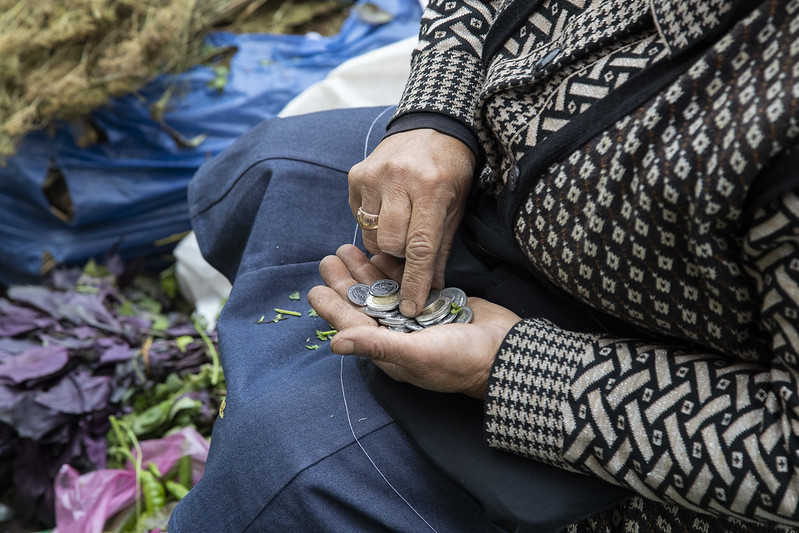
The world needs to prepare for a cascade of financial crises across emerging and developing economies. The writing is already on the wall, with
Bangladesh,
Ghana,
Pakistan and
Sri Lanka currently queuing at the International Monetary Fund’s door. Wealthier countries must now equip the IMF—the world’s financial firefighter-in-chief—to prevent and manage the spread of crises. They could start by ensuring that the fund has the resources to stop lower-income economies adopting beggar-thy-neighbour policies that destroy other countries’ livelihoods and threaten political and economic stability.
As the US dollar strengthens and
global growth slows, many poor-country governments that are already seriously overstretched by Covid-19, and by the food and energy crises sparked by Russia’s war in Ukraine, must now contend with depreciating currencies and rising borrowing costs. And support from China is declining as the country’s new political priorities, zero-Covid policies, distressed property market, demographic pressures and structural reforms cause its economy to grow at its
slowest rate in four decades.
Adding fuel to the fire, foreign investors are withdrawing funds from emerging markets at a
record pace. As a result, many of these countries are burning through the
foreign-exchange reserves that they had carefully built up after previous crises.
Major economies should now be taking several practical steps. During the 2008–09 global financial crisis, for example, G20 leaders
agreed to create a ‘trillion-dollar IMF’ that would have the means to slow and contain the spread of the crisis. This involved letting the IMF borrow from a group of willing countries, as well as increasing the fund’s capital to
SDR 477 billion (US$621 billion).
The IMF has additional lines of defence. In January 2021, its New Arrangements to Borrow scheme, under which
38 countries have agreed to lend to the fund should the need arise, was doubled in size and extended until 2025. The IMF also has
bilateral borrowing agreements, the extension of which is currently being negotiated.
In August 2021, countries agreed to a general allocation of
US$650 billion in special drawing rights, the largest in the fund’s history. The allocation was intended to boost the global economy’s resilience and stability and to assist vulnerable economies that were struggling to cope with the Covid-19 crisis. But, because SDRs are distributed according to countries’ IMF quotas, which depend heavily on their GDP, the measure’s impact has been limited.
In previous financial crises, the IMF has played a key role in helping to sustain a minimum level of confidence, thereby reducing the costs of containing and managing the crises. Given volatile markets, fleeing investors and financially overstretched governments, there is a strong case for again bolstering the IMF’s firepower.
For starters, the G20 countries should commit to
doubling the IMF’s core capital. That means a twofold increase in each country’s contribution (which is proportionate to the size of its economy). Such negotiations have been tricky in the past, because fast-growing economies will insist on gaining greater quota shares (influence) at the IMF, as Japan, Saudi Arabia and China have done over the years. The
far-reaching 2010 reforms involved substantial changes, and although geopolitical tensions have risen further since then, those changes have paved the way for a further increase now.
The need for the IMF to play a central role in managing a global crisis is one of the few areas on which G20 countries might agree. They should do this soon, because ratifying and implementing any new set of quotas will take time—five years, in the case of the 2010 agreement.
A second, more immediate step would be for the IMF to enhance its borrowing arrangements with richer countries through the New Arrangements to Borrow scheme and bilateral agreements. Middle Eastern energy producers, for example, are set to receive up to
US$1.3 trillion in additional oil revenues over the next four years, and stand to gain
quiet leverage by agreeing to increase their lending to the IMF.
A third possibility is either to sell off some of the IMF’s
gold holdings or for countries to agree to another general SDR allocation. But, again, the bulk of an SDR issuance goes to the largest economies (which have mostly chosen not to redistribute them to countries in need). And there are limits to countries’ willingness to exchange their hard-currency reserves for SDRs.
A far less discussed (and more controversial) option would be for wealthier countries that don’t borrow from the IMF to reduce the amount the fund pays them for providing it with credit. In 2020, the IMF spent
SDR 546 million remunerating members’ reserve tranche positions, and a further SDR 90 million on interest expenses. This is now set to increase, as both the IMF’s credit outstanding and the SDR interest rate rise.
Lastly, the IMF, like its sister institution the World Bank, could tap the capital markets—something it has never previously done. The World Bank’s International Bank for Reconstruction and Development provides loans to low- to middle-income countries by borrowing four to five times its equity capital in the market. Even the International Development Association, the World Bank’s concessional financing vehicle for the poorest countries, relies on capital markets to maximise its financing, although on a much smaller scale.
Both the International Bank for Reconstruction and Development and the International Development Association have AAA credit ratings, enabling them to minimise their cost of capital. Their experience, as well as that of other multilateral borrowers, suggests that the IMF could issue AAA-rated debt and leverage its equity, as well as its record of never reporting a credit loss in its 78-year history.
Powerful countries in the IMF, especially the G20, must now seriously consider what’s at stake. Like the
forest fires ripping through the northern hemisphere this summer, financial crises spread quickly. Managing them effectively will require adequately equipping the IMF ahead of time with well-positioned reserves and firebreaks.
 Print This Post
Print This Post